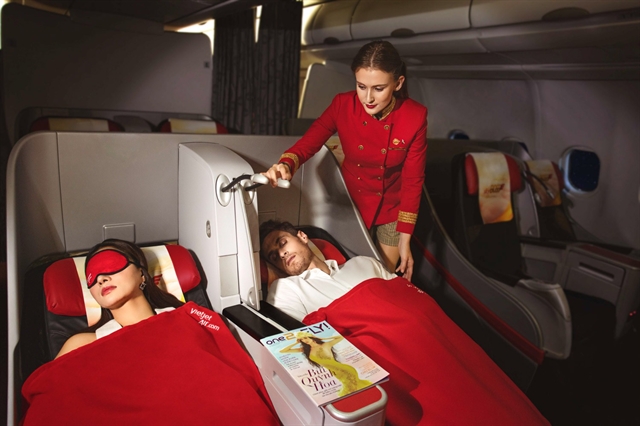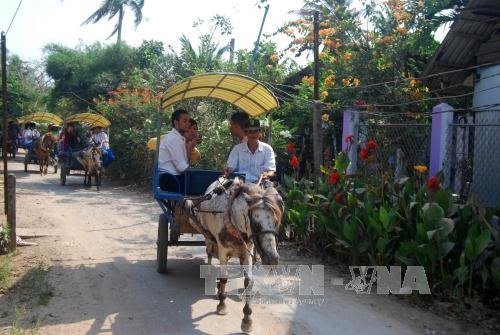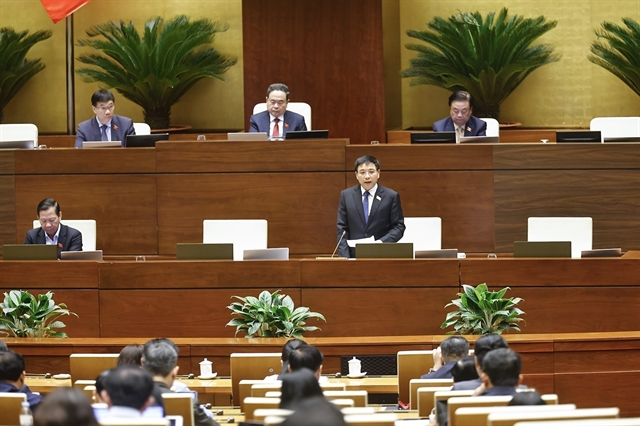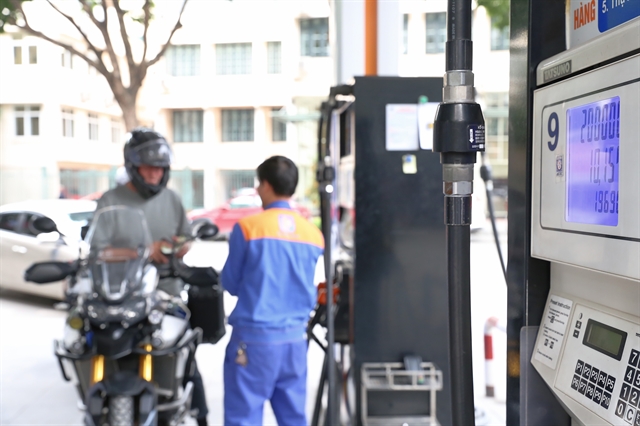 Society
Society

The Cửu Long (Mekong) Delta province of Bến Tre, which has a 65-km long coastline, plans to seek more investment in the tourism sector, particularly for three of its islets.
 |
| Tourists take a horse carriage ride in Bến Tre Province. — VNA/VNS Photo |
BẾN TRE PROVINCE — The Cửu Long (Mekong) Delta province of Bến Tre, which has a 65-km long coastline, plans to seek more investment in the tourism sector, particularly for three of its islets.
The three islets, where fruit trees of high economic value are grown, have hundreds of historical and cultural sites suited to tourism development.
Last year, Bến Tre welcomed about 1.2 million tourists, an increase of 12 per cent compared to 2016. Of the figure, about 43 per cent were international tourists. Total revenue from tourism reached more than VNĐ1 trillion (US$44 million).
In recent years, the province has promoted ecotourism, cultural tourism, heritage sites, and special destinations.
Tourism attractions include fruit gardens, rowboats, horse-drawn carriage rides, and Đờn Ca Tài Tử (southern folk music).
Phan Văn Thông, director of Phụng Islet Tourism-Service-Trading Co, said the company annually receives more than 500,000 tourists, with 20 per cent of them foreigners.
"My company will continue to upgrade environmental sanitation, train tour guides, and improve service quality," he said.
Lê Ngọc Long, chairman of the Việt Nam-Japan Advisory Council, said: "Japanese are interested in Việt Nam’s ecotourism with riverside gardens. Bến Tre has a lot of potential to exploit this great resource.”
“In the near future when the Việt Nam-Japan commodity trading floor is established, we will introduce Bến Tre’s tourism products to the Japanese,” he said.
Challenges
Trần Duy Phương, deputy director of the province’s Department of Culture, Sports and Tourism, said Bến Tre’s tourism industry faces challenges such as tourists’ short stays, poor technical infrastructure, and ineffective investment promotion.
Many of the activities are similar to other provinces in the delta, but there is no large entertainment park. A lack of trained tourism staff is another problem.
Tourists usually visit Bến Tre City and sites in the districts of Châu Thành, Chợ Lách and Thạnh Phú.
Châu Thành District welcomes about 700,000 visitors a year, accounting for over 50 per cent of the province’s total number of tourists. However, other localities are facing difficulties attracting tourists and tourism investment.
Nguyễn Văn Sơn, managing director of Hàm Luông Tourism Co Ltd in Bến Tre City, said international visitors travelling to Việt Nam are concerned about environmental sanitation, food safety, high prices for services and goods, and traffic problems.
“Many tourist and travel companies complain about crowds in some places, and people asking for tips,” he said.
Phương said the province targets having two million visitors, with 47 per cent of international tourists, by 2020.
In addition, total revenue from tourists is targeted at more than VNĐ2 trillion ($88 million), with an annual increase of at least 25 per cent.
By 2030, tourism will become a key economic sector, contributing 8-10 per cent of total production in the province, he said.
Bến Tre has five projects in the tourism sector, seven projects under construction, and 10 projects in tourism development calling for investment.
Nguyễn Văn Tuấn, general director of National Administration of Tourism, said that Bến Tre Province should focus on its local resources and develop products from coconut trees, create homestay services, upgrade infrastructure, promote quality services, and provide support policies for tourism businesses.
“It’s necessary to raise awareness about tourism, ensuring that we have both quality and efficiency, and develop activities and products that create a brand for Bến Tre tourism,” Võ Thành Hạo, secretary of the province’s Party Committee, said.
The province has 84 tourist sites, more than 2,000 hotel rooms, 54 horse carts, 73 boats with paddles, and 64 boats with more than 1,600 seats used to transport tourists. — VNS




